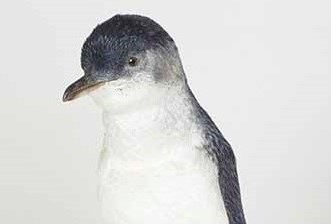
Our Land
Read more
Refine Results
Refine results
Images attached
Collection type
Classifications
- Tools and Equipment for Science and Technology 36
- Geological T&E 32
- Geological T&E (blank sub-class) 32
- Geospecimen 32
- Tools and Equipment for Materials 4
- Biological T&E 3
- Biological T&E (blank sub-class) 3
- Mining & Mineral Harvesting T&E 3
- Mining & Mineral Harvesting T&E (blank sub-class) 3
- Machine, Cutting 2
Production date
to
Image Orientation
colour
View
46 results. Displaying results 1 - 46.
| Name/title | Maker | Production date | Description | ||
|---|---|---|---|---|---|

|
Blue Penguin
|
A mounted little blue penguin (Eudyptula minor) specimen.
|
|||

|
Moeraki Boulder
|
Small Moeraki boulder. Moeraki boulders are concretions. They are known in te reo Maori as Te Kaihinaki. This specimen may be from the Katiki Beach area, Otago.
|
|||

|
Microscope Set
|
1880s
|
Brass binocular microscope with wooden case. This microscope was used by museum curator Thomas Forrester to view diatoms.
Pieces as follows: A - Rectangular wooden box (with no lid) that has a handle on one of the long side. The interior has compartments for the various pieces of the microscope. B - Base of the microscope. Brass. Two main supporting legs joined by a rectangular flat section with a lens in the centre. Joined to the front of the rectangular section is a circular tube with a rectangular base on top of it. On either side is a large knob which together raise and lower the screw for attaching the eyepiece. There is a fastening knob on it. Attached to the bottom of the circular tube is a mirror on a swivel. C - Eyepieces consisting of two circular tubes which meet at the bottom and are joined to a base which slots onto B. Also on the base is a lens. D - Piece of tube consisting of two sections, one slightly larger than the other. E - Lens consisting of two sections, one slightly larger than the other. F - Same as E. G - Canister for a lens "1/12 INCH". H - Lid for canister G "HOMOGENEOUS IMMERSION 1/12 INCH WATSON & SONS 313 HIGH HOLBORN LONDON". I - Lens "1/12 IN. HOMOG: IMMN" and "1.25 N.A.". J - Canister for lens. K - Lid for canister J. "2 Inch". L - Lens. |
||

|
Kakanui Mineral Breccia
|
A sample of mineral breccia from Kakanui, Otago.
|
|||

|
Chain
|
20th Century
|
Long metal chain made of 61 double and single toothed links.This is a section of the chain off a chainsaw used to cut limestone at Parkside Quarries, Weston.
|
||

|
Chain
|
20th Century
|
Long metal chain made of 33 double and single toothed links.This is a section of the chain off a chainsaw used to cut limestone at Parkside Quarries, Weston.
|
||

|
Keystone
|
Circa 1882
|
A figural keystone in the form of a bearded man. Mounted on a wooden backing. Originally from an internal arch in the 1882 Waitaki County Council building on Thames Street, Oamaru.
|
||

|
Tibiotarsus
|
A tibiotarsus (leg bone) from a moa. This specimen is from a South Island giant moa (Dinornis robustus.)
|
|||

|
Fossil Coral
|
Scleration corals in greensand. Flabellum.
|
|||

|
Fossil Echinoid
|
Fossil echinoid. ? pericosmos.
|
|||

|
Fossil Brachiopods
|
2 Brachiopod fossils. Pachymagas huttoni.
|
|||

|
Fossil Scallop Shell in Limestone Block
|
Block of limestone recovered from the Queen's Hotel (Brydone), Thames Street, Oamaru. The block is spilt in to two pieces and contains a fossil scallop shell. Serripecten species.
|
|||

|
Fossil Shell
|
Fossil shell from Ardgowan. Spinomelon parki.
|
|||

|
Fossil Shell
|
Fossil scaphopod shell. Dentalium.
|
|||

|
Limestone with Bryozoan Fossils
|
A piece of limestone with clearly visible bryozoan fossils.
|
|||

|
Fossil Rhodolith Section
|
Fossil rhodoliths within McDonald Limestone. The specimen has been cut to show the rhodoliths.
|
|||

|
Fossil Rhodolith
|
A whole fossilised rhodolith, resembles a ball. Rhodoliths are a red algae.
|
|||

|
Half Fossilised Rhodolith
|
Half a fossilised rhodolith, cut down the middle to show a cross section. Fossil is round and golf ball-like. The rhodolith seems to have formed around a shell fragment.
|
|||

|
Petrified Wood
|
A section of petrified wood. From Livingstone, Otago.
|
|||

|
Petrified Wood
|
A section of fossil wood. It shows tunnels from teredo borings. From Five Forks, Kauru formation.
|
Loading...
